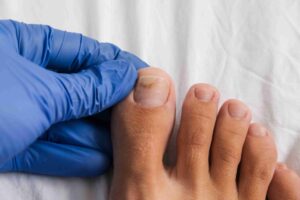What is a Freiberg’s Disease? Learn more about this condition
Freiberg’s Disease also known as Freiberg infraction, is a condition where the head of a metatarsal (base of the toes or ball of the foot) becomes weak, and fractures.
The most common metatarsals affected are the 2nd and 3rd. It is believed to be caused by repeated micro-trauma to metatarsals, causing localised lack of blood flow to the area. The metatarsal heads then become weaker and collapse. The condition mostly occurs in younger athletes over the age of 12, and more commonly affects females more than males.
Freiberg’s infraction results in collapse of the bone and also cysts at the joint in the head. This leaves a flat rather than rounded head to the bone with a wider gap at the joint. The metatarsal head may also have fragments flake off and sclerosis occurring at the bone margins. These changes to the bone increase the likelihood of developing painful osteoarthritis at the joint later in life so it is important to seek management while the infraction is active to minimise damage to the joint and to help with symptomatic management.
Symptoms of Freiberg’s Disease
- Constant localised pain usually at the head of the 2nd metatarsal
- Increases with weight bearing activity
- In dancers work on demi pointe and pointe will exacerbate symptoms
- Localised swelling can sometimes be seen
- Decrease in the range of motion available at the joint
Cause of Freiberg’s Disease
Often activities involving a lot of sprinting, jumping or weight bearing on the forefoot may then contribute to micro-trauma of the metatarsal heads.
Wearing non supportive or cushioning footwear may contribute to underlying pressure on the metatarsals.
A-vascular necrosis (localised loss of blood flow) to the metatarsal head causes it to become weaker; therefore, the metatarsal head may collapse and fracture as a result.
Treatment
Treatment of this condition depends on the age of the patient. Your podiatrist might discuss some of these treatment options with you:
- Supportive footwear
- Padding placed in shoe beneath the involved bone
- Reduce weight bearing activity
- Cast
- Orthotic therapy
- In severe cases- surgical intervention
Are you suffering from this condition? One of our podiatrist can assist and recommend what treatment options are best to get you back on track. ✅
Schedule an appointment here or you may call us at 44 (0) 207 101 4000. 📞
We hope you have a feetastic day! 👣☀️
-The Chelsea Clinic and Team



